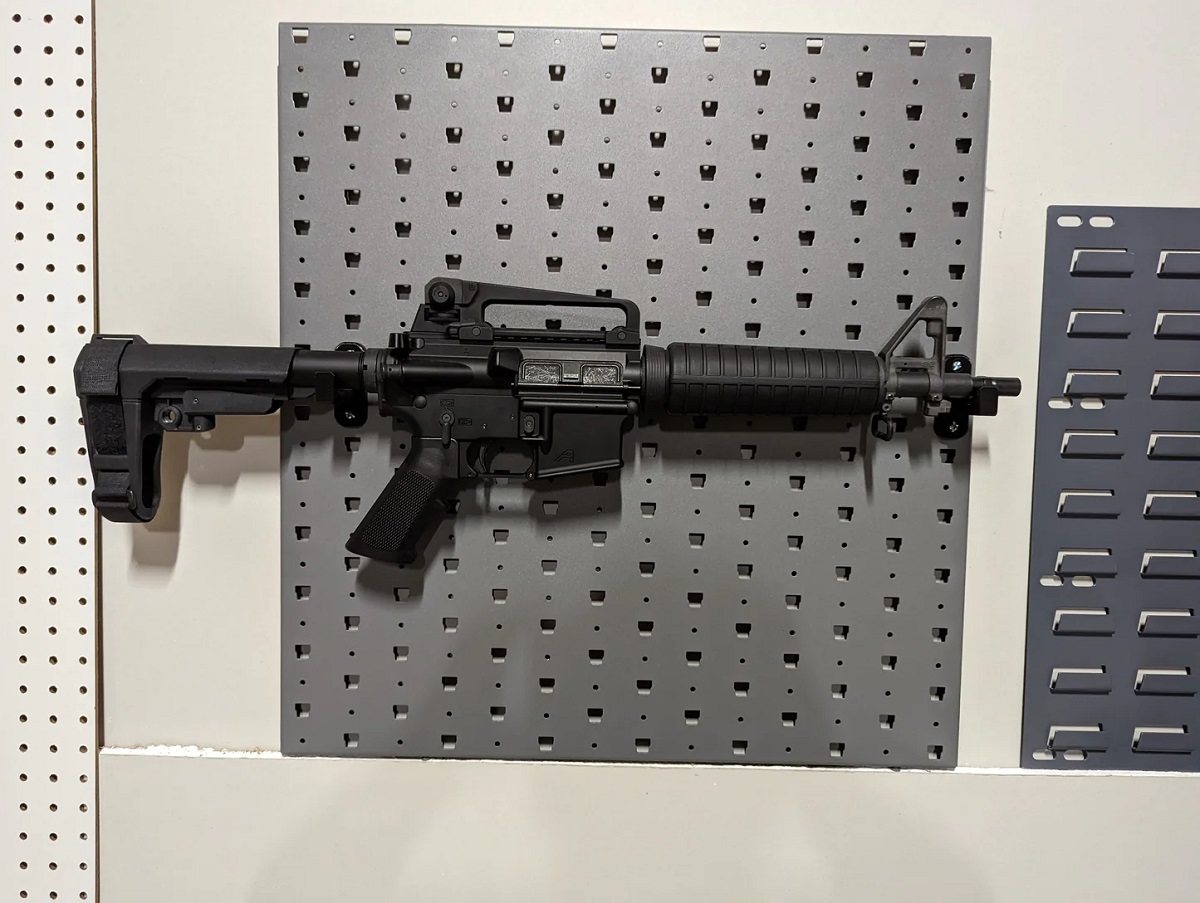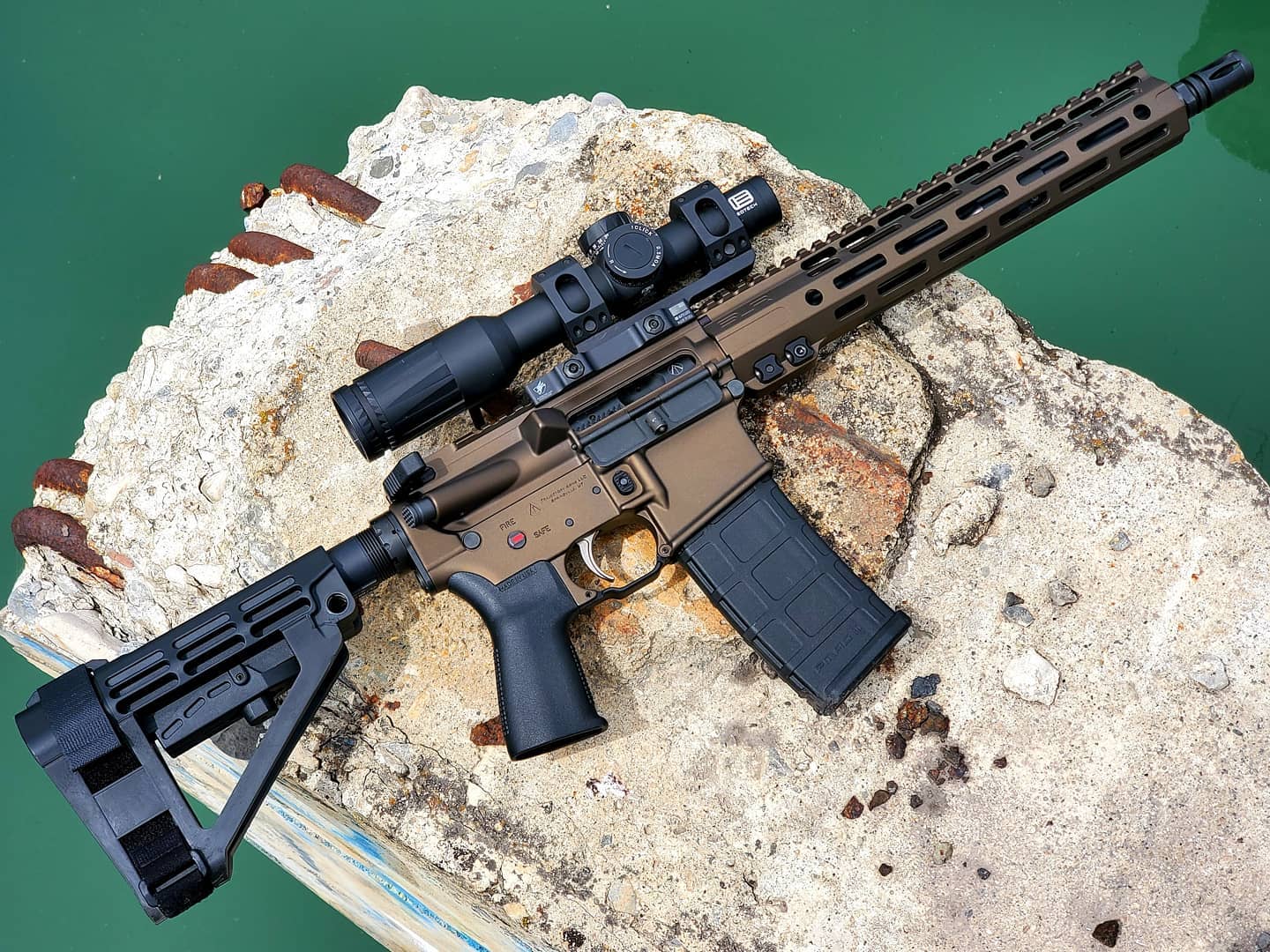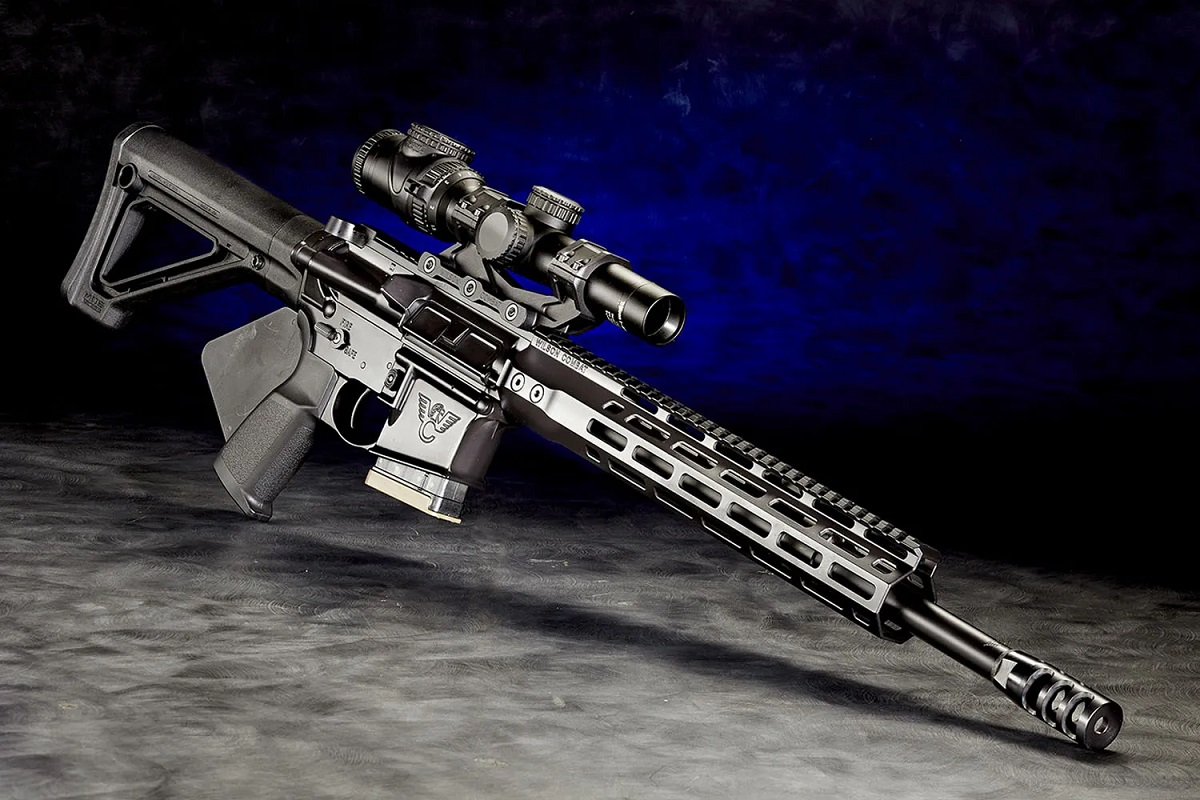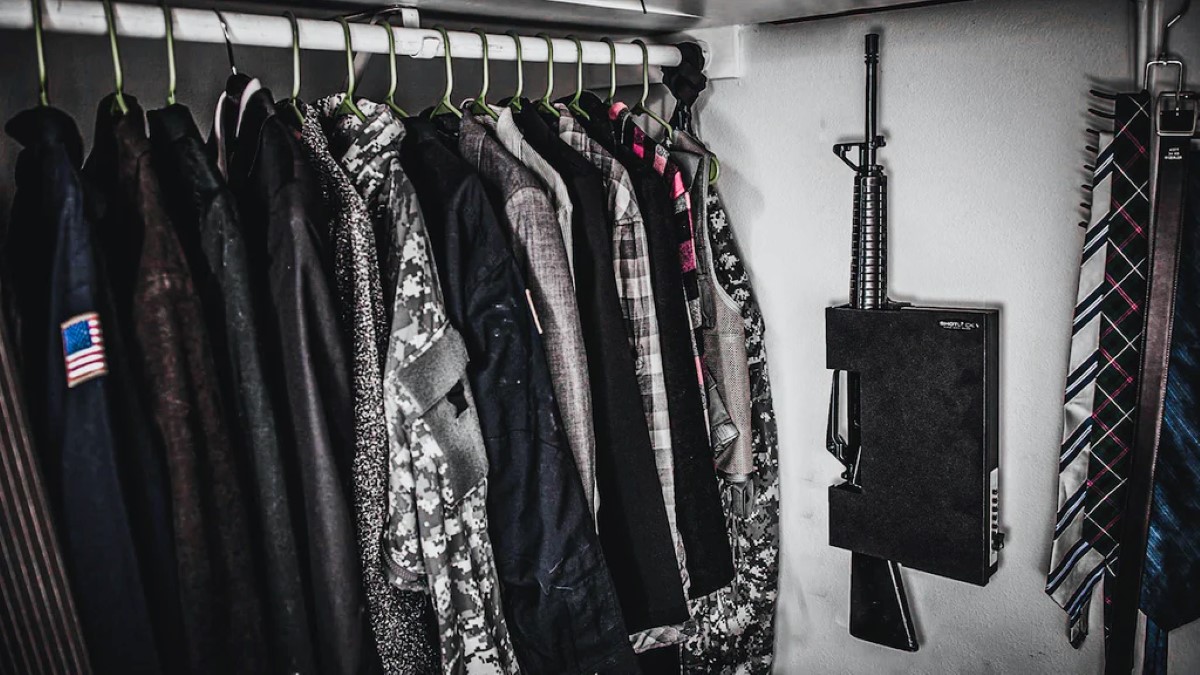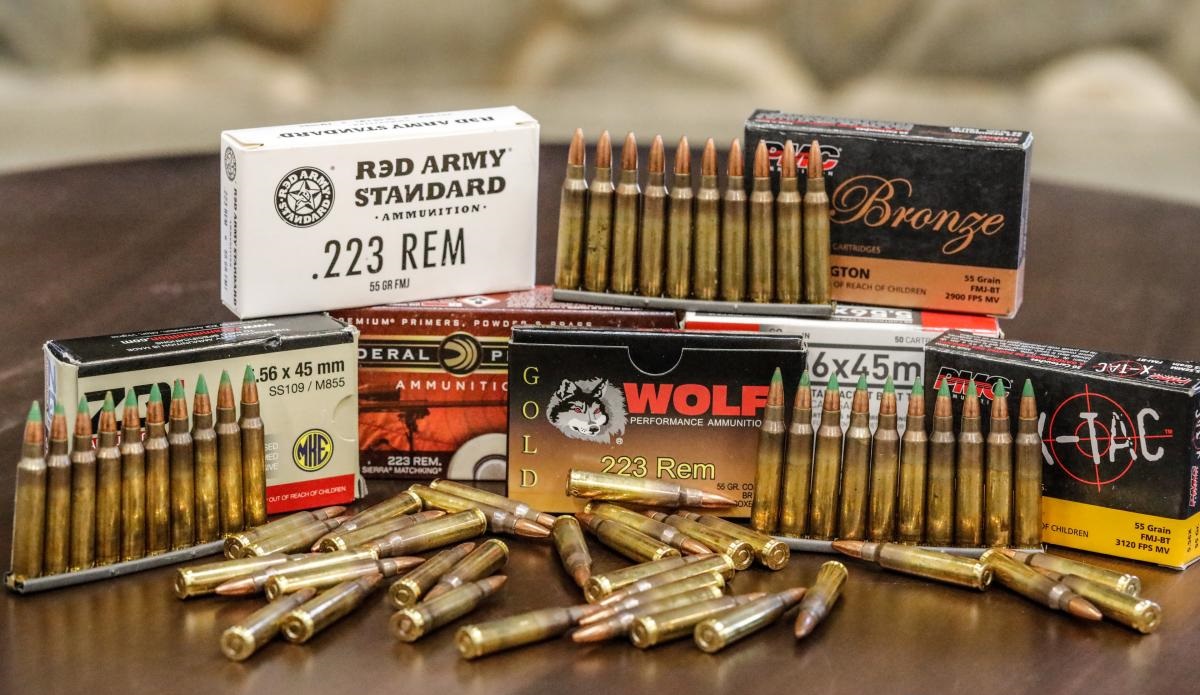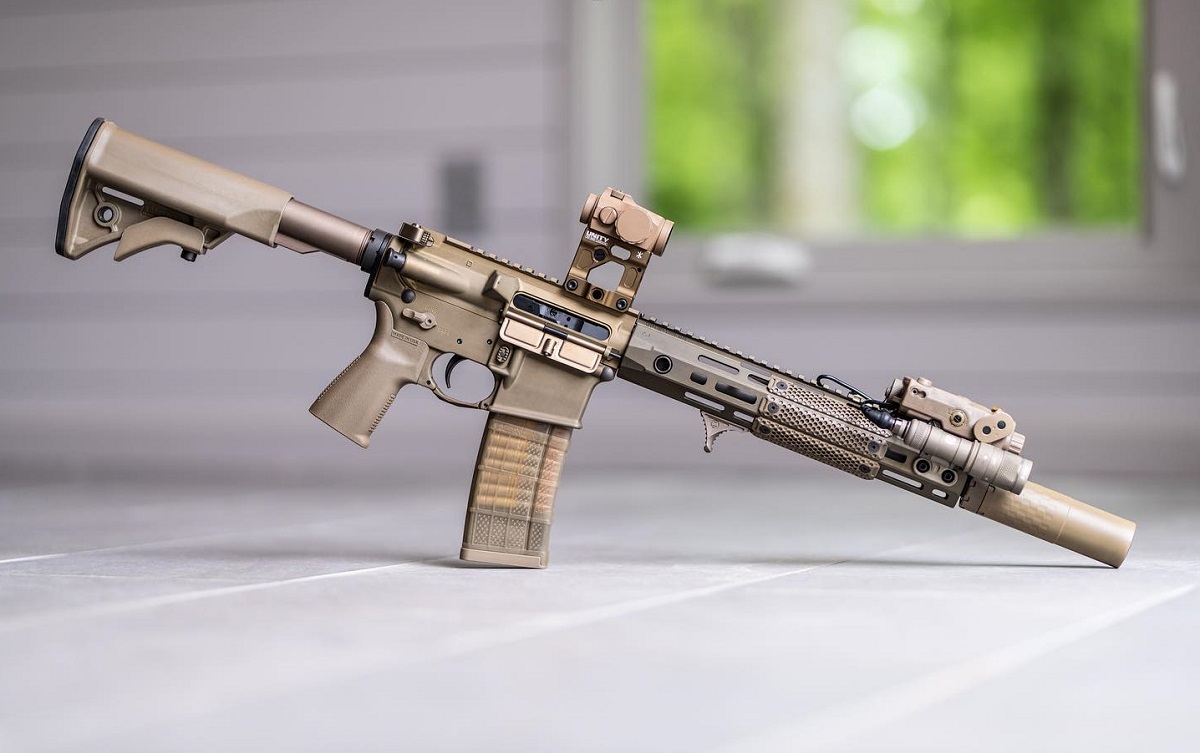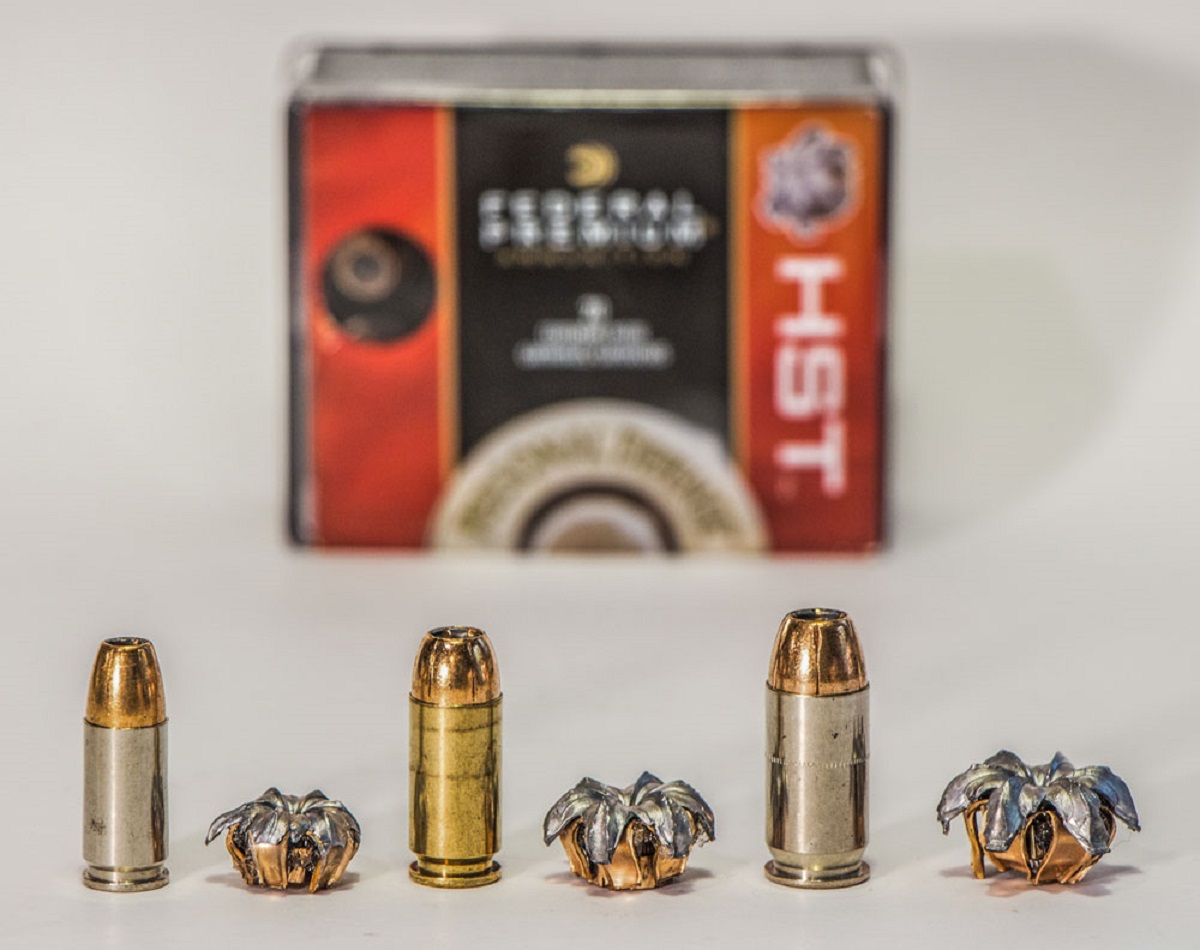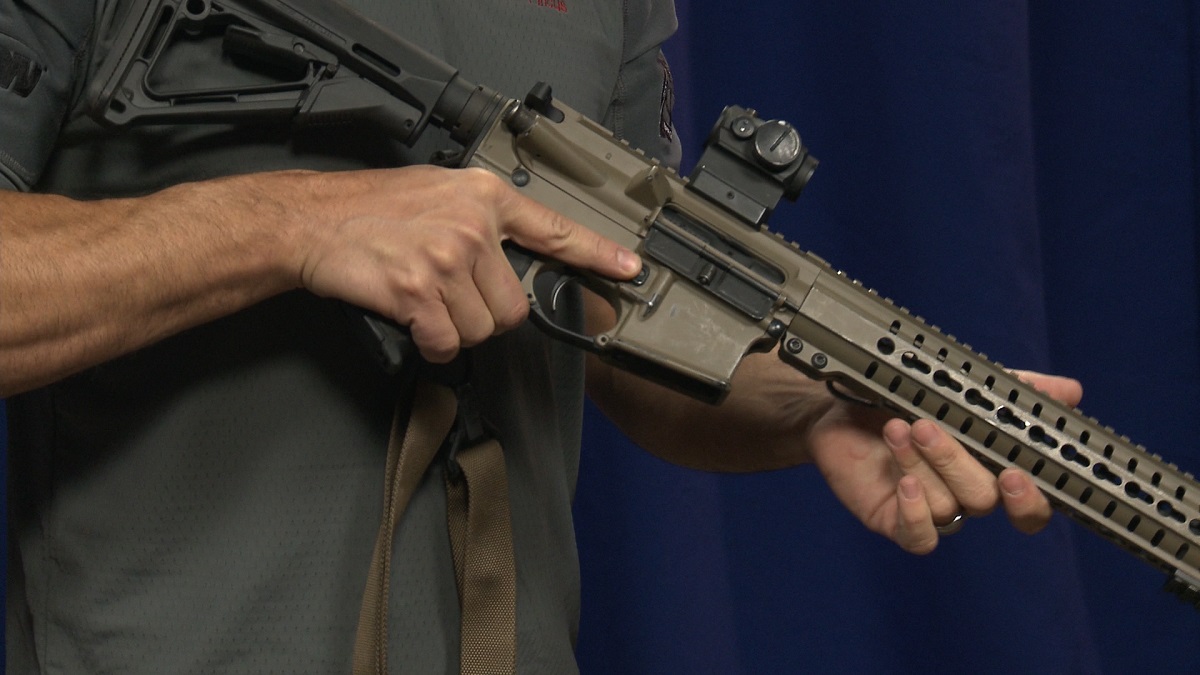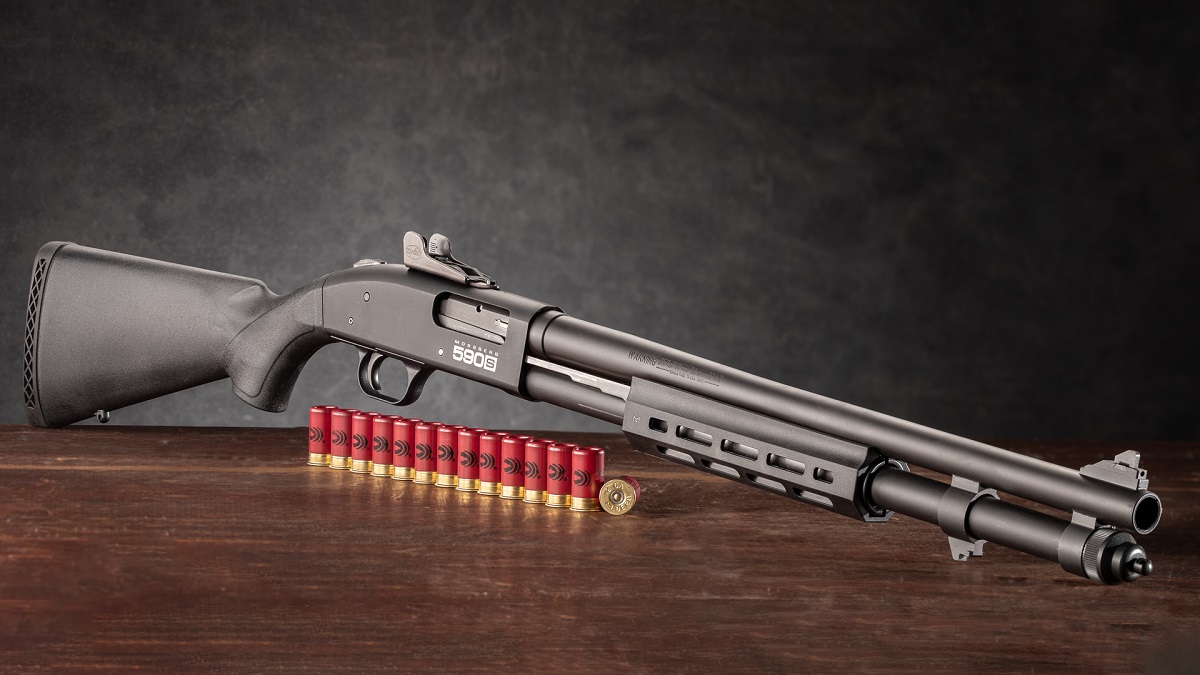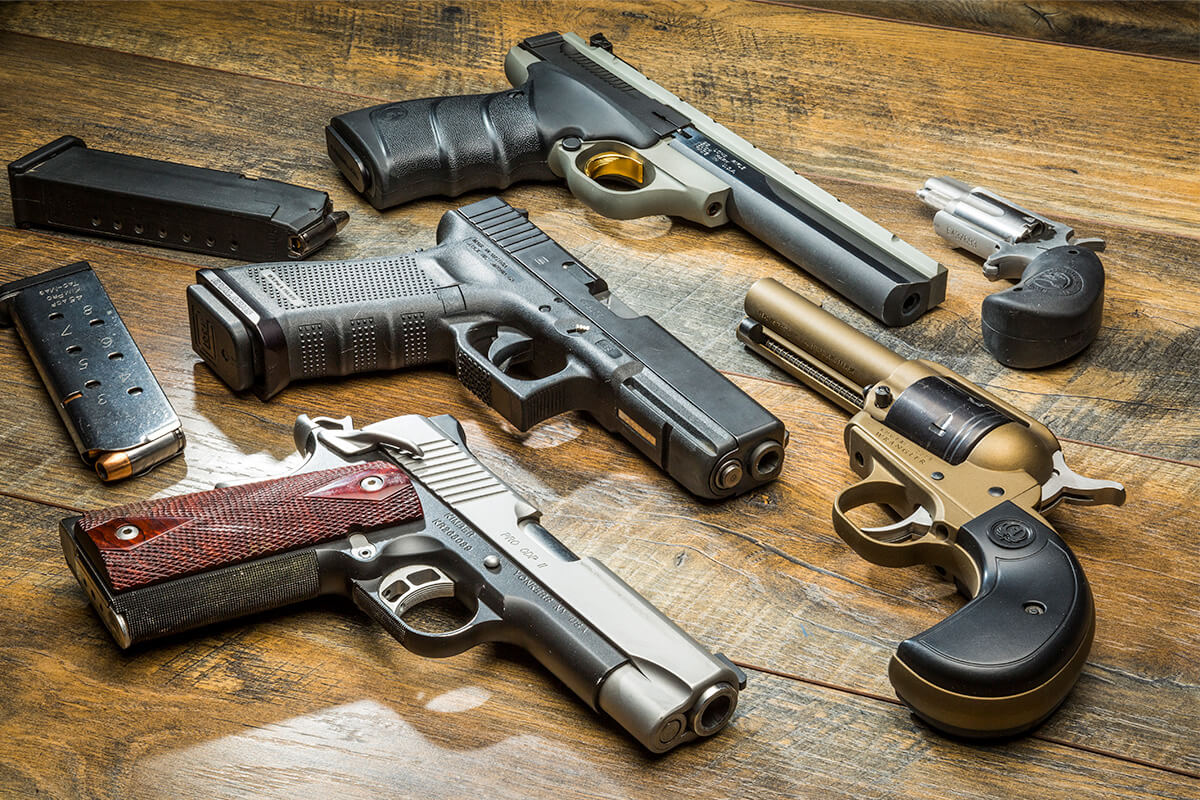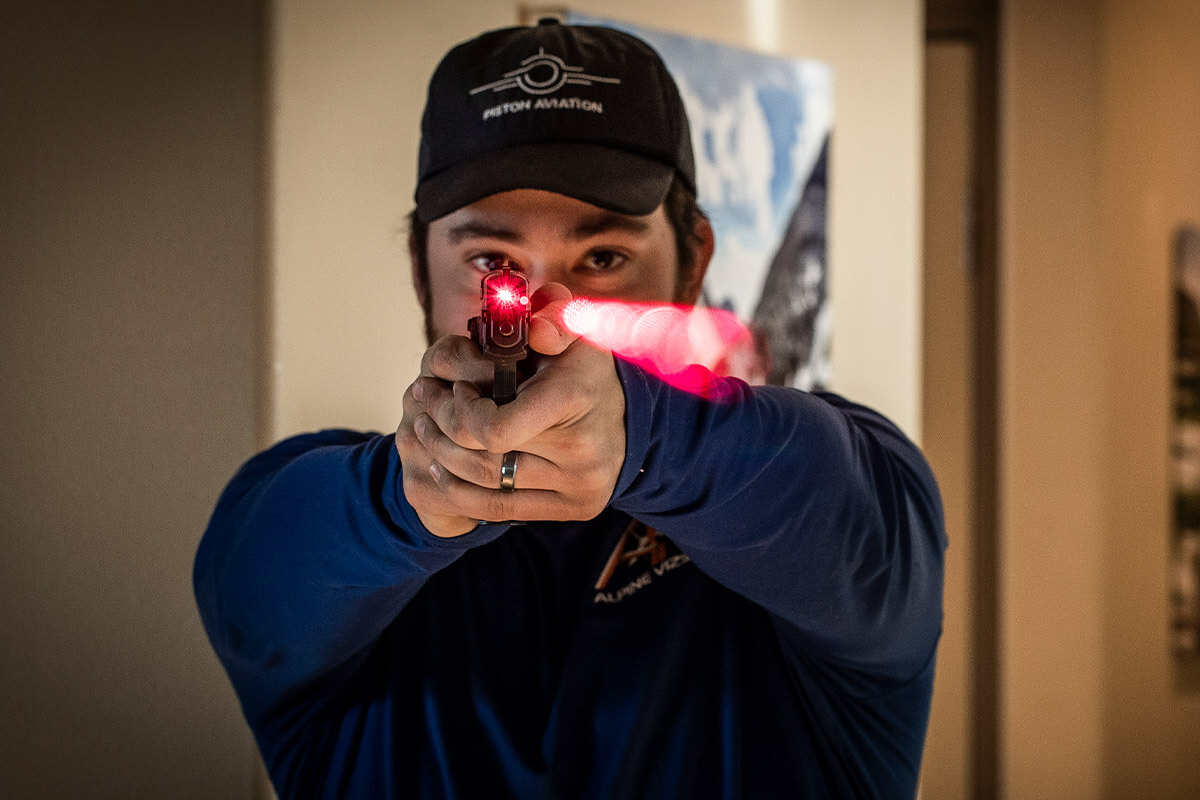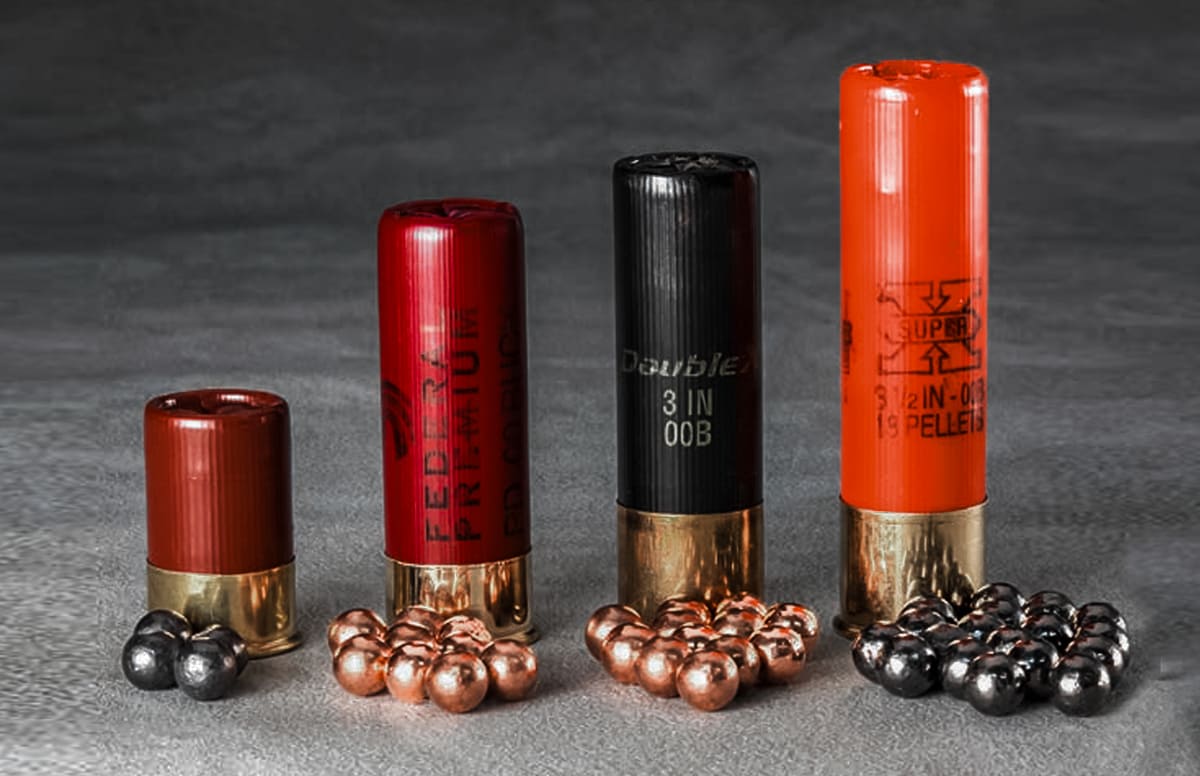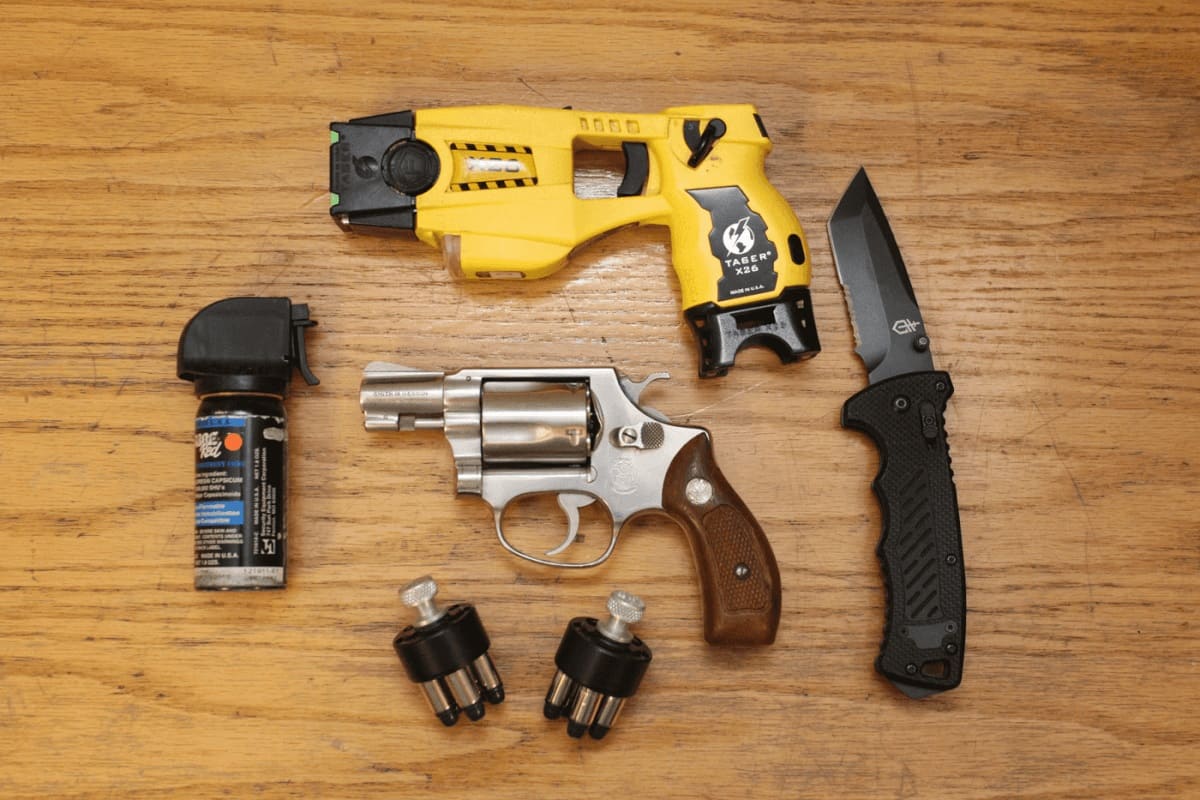Home>Home Security and Surveillance>Which Suppressor To Use For AR-15 For Home Defense
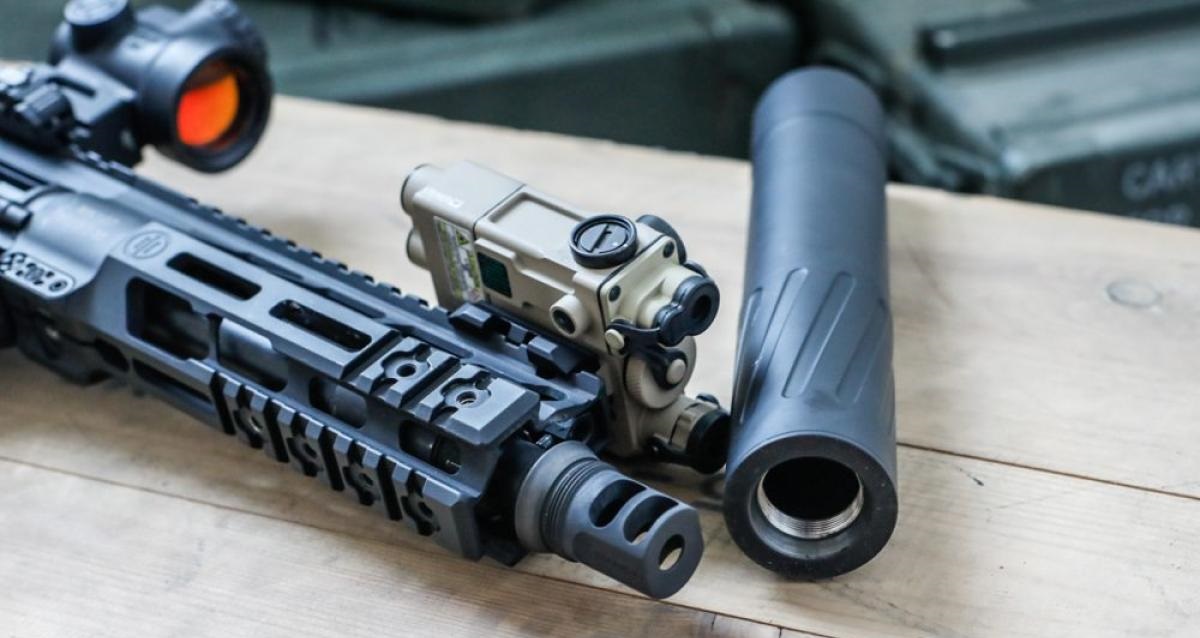

Home Security and Surveillance
Which Suppressor To Use For AR-15 For Home Defense
Modified: March 21, 2024
Choose the perfect suppressor for AR-15 home defense and enhance your home security and surveillance with our expert recommendations.
(Many of the links in this article redirect to a specific reviewed product. Your purchase of these products through affiliate links helps to generate commission for Storables.com, at no extra cost. Learn more)
Introduction
When it comes to home security and defense, one of the most important aspects to consider is having the right tools and equipment to protect your loved ones and property. A key component of a robust home defense strategy is the AR-15 rifle. With its versatility, reliability, and accuracy, the AR-15 has become a popular choice for homeowners who want to ensure their safety.
However, the loud noise and muzzle blast produced by firing an AR-15 can be a major drawback in a home defense scenario. This is where a suppressor, also known as a silencer, can make a significant difference. A suppressor works by reducing the noise and recoil generated by the firearm, making it more effective and less disruptive, especially in close-quarters situations.
Choosing the right suppressor for your AR-15 home defense setup requires careful consideration of several factors. In this article, we will explore the key aspects to keep in mind when selecting a suppressor to maximize its effectiveness in a home defense scenario.
Key Takeaways:
- Choose a suppressor with high noise reduction to protect your hearing and maintain tactical advantage in home defense scenarios. Consider your specific shooting needs and preferences for the best fit.
- Prioritize a compact and lightweight suppressor to maintain maneuverability and balance in tight spaces. Balance size and weight with noise reduction and recoil management for optimal home defense performance.
Read more: How To Use AR-15 For Home Defense
Factors to Consider when Choosing a Suppressor for AR-15 Home Defense
1. Noise Reduction Performance: One of the primary reasons for using a suppressor in a home defense situation is to reduce the noise produced by the firearm. Look for suppressors that have excellent noise reduction capabilities, typically measured in decibels (dB). The higher the dB reduction, the quieter the suppressor will be.
2. Size and Weight Considerations: In a home defense scenario, maneuverability and ease of use are essential. Consider the size and weight of the suppressor, as you don’t want it to be bulky or cumbersome. Look for compact and lightweight suppressors that won’t affect the balance or handling of your AR-15.
3. Mounting Options: Suppressors can be attached to the AR-15 in different ways, such as direct-thread, quick-detach (QD), or muzzle brake mounts. Each mounting option has its pros and cons. Consider your specific needs and preferences to choose the mounting system that is most convenient for you.
4. Suppressor Material and Durability: The material from which the suppressor is made can impact its overall durability and longevity. Common materials include stainless steel, titanium, and aluminum. Choose a suppressor that is made from high-quality materials to ensure it can withstand the rigors of home defense use.
5. Barrel Length Considerations: The length of your AR-15’s barrel can influence the performance of the suppressor. Generally, shorter barrels benefit more from suppressors as they tend to produce more noise and muzzle blast. If you have a shorter barrel, consider choosing a suppressor specifically designed for that barrel length.
6. Legal Considerations: Before purchasing a suppressor, ensure that you are familiar with the laws and regulations regarding their ownership and use in your area. In some regions, suppressors may be subject to strict regulations or even prohibited. Familiarize yourself with the legal requirements to avoid any legal issues.
7. Maintenance and Cleaning: Like any firearm accessory, suppressors require regular maintenance and cleaning to ensure optimal performance. Consider the ease of disassembly and cleaning when choosing a suppressor. Look for models that can be easily taken apart for cleaning without requiring specialized tools.
Choosing the right suppressor for your AR-15 home defense setup is crucial for maximizing its effectiveness and ensuring your safety. Consider these factors carefully to make an informed decision that suits your specific needs and preferences.
Noise Reduction Performance
When it comes to choosing a suppressor for your AR-15 home defense setup, one of the most important factors to consider is its noise reduction performance. The primary goal of using a suppressor is to minimize the noise generated when firing the firearm, which can be deafening in an indoor environment. By reducing the noise signature, you not only protect your hearing but also prevent the loud report from potentially alerting intruders to your exact location.
Noise reduction is typically measured in decibels (dB), with higher dB values indicating greater noise suppression. It’s essential to select a suppressor that offers a significant reduction in noise. However, it is important to note that no suppressor can make the firearm completely silent. The main purpose is to make the sound more manageable and less ear-splitting.
When comparing suppressors, pay attention to their published dB reduction ratings. Keep in mind that different manufacturers may test their products using different methodologies, so use these numbers as a general guide rather than a definitive measure.
It’s worth noting that noise reduction can vary depending on a few factors, such as the ammunition used, the length of the barrel, and whether the firearm is fully or semi-auto. In general, higher-powered ammunition generates more noise, as does a shorter barrel. So, if you have a short-barreled AR-15, you may want to opt for a suppressor with higher noise reduction capabilities.
Another consideration is the type of shooting you plan to do with your AR-15. If you primarily engage in home defense scenarios with close-quarters shooting, you’ll want a suppressor that excels at reducing the noise signature in short ranges. On the other hand, if you also plan to use your AR-15 for long-range precision shooting, you may want to select a suppressor that maintains its effectiveness over longer distances.
Ultimately, the goal is to strike a balance between noise reduction performance and other factors like size, weight, and recoil reduction. Always consider your specific needs and priorities when making a decision.
Keep in mind that using a suppressor also affects the felt recoil of the firearm. While not directly related to noise reduction, many suppressors can also reduce the recoil produced by the AR-15, making it more comfortable to shoot and allowing for faster follow-up shots. This can be particularly beneficial in high-stress situations where accuracy and control are paramount.
Overall, selecting a suppressor with excellent noise reduction performance is crucial for improving the effectiveness of your AR-15 in a home defense situation. By mitigating the noise produced, you can protect your hearing, maintain tactical advantage, and potentially gain the element of surprise—essential elements in maintaining the safety and security of your home and loved ones.
Size and Weight Considerations for Home Defense
When choosing a suppressor for your AR-15 home defense setup, it’s important to take into account the size and weight of the suppressor. In a home defense scenario, where speed, maneuverability, and ease of use are crucial factors, you want a suppressor that doesn’t compromise the overall handling of your firearm.
The size of the suppressor can impact how easily you can move around tight corners or confined spaces, such as hallways and doorways. A compact suppressor allows for better maneuverability and reduces the chances of the suppressor getting snagged on objects as you move. Additionally, a smaller suppressor is less likely to obstruct your line of sight or interfere with your shooting stance, providing a clear view of potential threats and targets.
Similarly, the weight of the suppressor plays a significant role in the balance and handling of your AR-15. A heavy suppressor can make the front end of the firearm feel unwieldy and unbalanced, which can negatively impact your ability to aim and maintain control during rapid-fire situations.
However, it’s important to strike a balance between size and weight, as a suppressor that is too lightweight may not provide enough noise reduction or recoil mitigation. Look for suppressors that are designed to be both compact and lightweight without compromising on performance.
Another consideration is the material from which the suppressor is made. Different materials have varying weights and can affect the overall weight of the suppressor. For example, titanium suppressors are known for their lightweight properties, while stainless steel suppressors tend to be heavier but offer better durability.
Ultimately, the ideal size and weight for a home defense suppressor will depend on your personal preferences, shooting style, and the specific layout of your home. Consider practicing with your AR-15, both with and without the suppressor attached, to get a feel for how it affects the handling and balance of the firearm. This will help you determine the right balance between size, weight, and performance.
Remember, in a home defense situation, every second counts, and the ability to move quickly and efficiently can be critical. By choosing a suppressor that is compact and lightweight, you can ensure that your AR-15 remains highly maneuverable without sacrificing noise reduction or recoil mitigation capabilities.
Ultimately, the goal is to find a suppressor that enhances your ability to navigate your home and respond effectively to potential threats, allowing you to defend yourself and your loved ones with confidence and precision.
Mounting Options for AR-15 Suppressors
When selecting a suppressor for your AR-15 in a home defense context, it is crucial to consider the different mounting options available. The mounting system determines how the suppressor is attached to your firearm and can impact its overall functionality, ease of use, and versatility.
Here are some common mounting options for AR-15 suppressors:
- Direct-Thread Mount: This is the simplest and most common type of mounting system. The suppressor is threaded directly onto the barrel of the AR-15. Direct-thread mounts are known for their stability and reliability, as there are no additional moving parts. However, they may require some effort to attach and remove the suppressor, especially if it becomes hot during use.
- Quick-Detach (QD) Mount: This mounting system allows for quick and easy attachment and removal of the suppressor. QD mounts typically consist of a flash hider or muzzle brake that remains permanently attached to the barrel, while the suppressor itself can be quickly attached or detached. QD mounts offer convenience, allowing you to switch between suppressed and unsuppressed shooting easily. However, it’s essential to ensure that the muzzle device and suppressor are compatible with the QD system.
- Muzzle Brake Mount: A muzzle brake is a device that is attached to the barrel of the AR-15 to redirect gases and reduce recoil. Some suppressors are designed to mount directly onto a muzzle brake, eliminating the need for additional flash hiders or muzzle devices. This system combines the benefits of both the muzzle brake and suppressor, enhancing recoil reduction and noise suppression. Keep in mind that not all suppressors are compatible with a muzzle brake mount, so be sure to check the specifications before purchasing.
When choosing a mounting option, it is important to consider your specific needs and preferences. If quick attachment and detachment are essential, a QD mount may be the best choice. On the other hand, if stability and simplicity are more important, a direct-thread mount may be a better fit.
It is also worth noting that some suppressors may be compatible with multiple mounting options, allowing you to switch between different configurations depending on your needs. This versatility can be advantageous if you use your AR-15 for various purposes, such as home defense, hunting, or long-range shooting.
Before making a final decision, be sure to research the compatibility of the mounting system with your AR-15 platform and consider any additional components or accessories that may be required. This will ensure that your suppressor can be securely attached to your firearm, providing optimal performance and reliability during home defense situations.
Remember, the mounting option you choose should provide a secure and stable connection between your AR-15 and suppressor, enabling effective noise reduction and recoil mitigation while maintaining the overall functionality and usability of your firearm.
When choosing a suppressor for AR-15 home defense, look for one that is lightweight, durable, and provides maximum sound reduction. Consider factors such as length, diameter, and material to ensure it meets your specific needs.
Read more: How Often Is An AR-15 Used In Home Defense
Suppressor Material and Durability
When selecting a suppressor for your AR-15 in a home defense scenario, it is essential to consider the material from which the suppressor is made. The material choice can have a significant impact on the suppressor’s overall durability, longevity, and performance.
Here are some common materials used in suppressor construction:
- Stainless Steel: Stainless steel is a popular choice for suppressors due to its durability and resistance to corrosion. It can withstand high temperatures without degrading or warping over time. Stainless steel suppressors are known for their ruggedness and long lifespan, making them an excellent option for sustained use in home defense situations.
- Titanium: Titanium is known for its exceptional strength-to-weight ratio, making it a popular material choice for suppressors. It offers similar durability to stainless steel but at a much lighter weight. Titanium suppressors are highly resistant to corrosion and can withstand high-temperature environments. However, they tend to be more expensive than stainless steel suppressors.
- Aluminum: Aluminum suppressors are lightweight and offer excellent heat dissipation. The lower weight can improve maneuverability and handling, but aluminum is generally not as durable as stainless steel or titanium. It may be more prone to scratches and dings, and prolonged exposure to high temperatures can cause degradation over time. However, aluminum suppressors can still provide reliable performance for home defense purposes if properly cared for.
When considering the material choice, it’s crucial to assess your specific needs and how you plan to use the suppressor. If you expect heavy use or need a suppressor that can withstand harsh conditions, such as extreme temperatures or exposure to moisture, a stainless steel or titanium option may be more appropriate. These materials offer exceptional durability and reliability for extended periods of use.
On the other hand, if weight is a primary consideration and you prioritize maneuverability, an aluminum suppressor may be a suitable choice. Though not as robust as stainless steel or titanium, it can still provide adequate durability for most home defense scenarios.
It’s important to note that proper care and maintenance are essential for maximizing the lifespan and performance of any suppressor, regardless of the material. Regular cleaning and maintenance routines will help prevent carbon buildup and ensure the suppressor remains in optimal condition.
Ultimately, the material choice for your suppressor will depend on your specific requirements, preferences, and budget. Consider the trade-offs between durability, weight, and cost to select the best material that matches your needs and offers reliable performance in a home defense setting.
Remember, a durable suppressor constructed from high-quality materials will provide years of reliable service, enhancing the effectiveness of your AR-15 in home defense situations and ensuring your peace of mind.
Barrel Length Considerations
When selecting a suppressor for your AR-15 in a home defense scenario, it’s important to consider the length of your firearm’s barrel. The barrel length can impact the suppressor’s performance and your overall shooting experience.
Here are some considerations regarding barrel length:
1. Noise Reduction: Generally, shorter barrels tend to produce louder shots due to increased muzzle blast and gas pressure. The use of a suppressor can help mitigate this noise, making it more manageable. If you have a short-barreled AR-15, choosing a suppressor specifically designed for shorter barrels can enhance its noise reduction capabilities in a home defense context.
2. Velocity: Barrel length plays a role in determining the velocity of the bullet as it exits the muzzle. Longer barrels can provide higher muzzle velocities due to the increased time the bullet spends in the barrel, allowing for more complete powder combustion. When selecting a suppressor, consider any potential impact on bullet velocity, as some suppressors may slightly reduce muzzle velocity. However, the difference is typically negligible and unlikely to significantly affect home defense scenarios.
3. Maneuverability: Shorter barrels offer increased maneuverability, making it easier to navigate tight spaces and corners in a home defense situation. A shorter barrel allows for quicker target acquisition and better handling in close-quarters engagements. Consider how the suppressor’s added length might impact the overall maneuverability of your AR-15.
4. Recoil: Barrel length can affect the felt recoil of the firearm. Generally, longer barrels help mitigate recoil by spreading it out over a greater distance. However, the addition of a suppressor can also help reduce recoil by redirecting gases and adding weight to the front end, improving stability and control during rapid-fire situations. Consider how the suppressor’s design and added weight may affect the overall felt recoil of your AR-15.
It’s important to note that suppressors are not limited to specific barrel lengths. They can be used on various barrel lengths with varying degrees of effectiveness. However, for optimized performance and noise reduction, selecting a suppressor that matches your AR-15’s barrel length or is specifically designed for your shorter barrel can be advantageous.
Ultimately, the choice of barrel length and corresponding suppressor selection should be based on your specific needs, preferences, and the layout of your home. Consider factors such as maneuverability, noise reduction, and recoil management to determine the optimal combination for your home defense setup.
Remember, the goal is to choose a suppressor that complements your AR-15’s barrel length, enhances your shooting experience, and improves your effectiveness and safety in home defense scenarios.
Legal Considerations for Suppressor Ownership
Before purchasing a suppressor for your AR-15 in a home defense context, it is crucial to understand and comply with the legal regulations surrounding suppressor ownership in your area. Suppressors, also known as silencers, are subject to specific laws and restrictions that vary from country to country and even within different states or regions.
Here are some important legal considerations to keep in mind:
- National Laws: Familiarize yourself with the laws and regulations regarding suppressor ownership on a national level. In some countries, suppressors may be highly regulated or even prohibited. Ensure you understand the specific requirements, including background checks, documentation, and registration, if any, before purchasing a suppressor.
- State/Regional Laws: Laws surrounding suppressor ownership can vary significantly between states or even within different regions of the same country. Some states have stringent regulations, while others may permit ownership with fewer restrictions. Research and understand the specific laws in your state or region to ensure compliance.
- Background Checks and Paperwork: Confirm whether background checks, paperwork, or additional permits are required for suppressor ownership. This may involve submitting an application, providing fingerprints, and paying associated fees. Complying with these requirements is essential to legally possess and use a suppressor.
- Transferability: Determine whether there are any restrictions on transferring suppressors to other individuals. Some jurisdictions may require a transfer tax or additional paperwork for each transfer. Understand the process and legal obligations associated with transferring suppressors to others or inheriting them.
- Prohibited Locations: Be aware of any locations where suppressors are prohibited, such as federal buildings, schools, or public events. Understand the restrictions on possessing and using suppressors in these areas to avoid legal issues.
- Compliance with Federal Laws: If you reside in a country that allows suppressor ownership, ensure that you comply with all federal laws and regulations. This may include adhering to the National Firearms Act (NFA) if applicable, proper registration, and adherence to any additional federal requirements.
It is crucial to remember that laws regarding suppressor ownership can change over time. Stay up to date with any updates or amendments to the legislation in your area. Consult local law enforcement or legal experts for the most accurate and current information regarding suppressor ownership and use.
Failure to comply with pertinent laws and regulations can result in severe legal consequences, including criminal charges and confiscation of firearms and suppressors. It is your responsibility as a firearm owner to understand and adhere to all applicable laws and regulations.
By ensuring compliance with suppressor laws, you can legally own and use a suppressor for your AR-15 in a home defense capacity, contributing to a comprehensive and effective self-defense strategy while staying on the right side of the law.
Maintenance and Cleaning of AR-15 Suppressors
Proper maintenance and cleaning of your AR-15 suppressor are crucial for ensuring optimal performance and longevity. Regular care and upkeep will help maintain its effectiveness in a home defense scenario. Here are some essential tips for maintaining and cleaning your AR-15 suppressor:
- Follow Manufacturer’s Instructions: Always refer to the manufacturer’s instructions regarding maintenance and cleaning. They will provide specific guidelines tailored to the design and materials of your suppressor.
- Regular Cleaning: Suppressors can accumulate fouling, carbon buildup, and debris over time. Regular cleaning is necessary to prevent a decrease in performance. Frequency of cleaning will depend on how often you shoot and the type of ammunition used. Aim to clean your suppressor after every shooting session or at least every few hundred rounds.
- Disassembly: Some suppressors can be disassembled for thorough cleaning, while others may have sealed or welded components. If disassembly is possible, follow the manufacturer’s instructions to take it apart carefully. Pay attention to any specific tools or techniques required for disassembly.
- Removing Carbon and Fouling: Use appropriate cleaning solvents, brushes, and tools to remove carbon buildup and fouling. Soak the suppressor components in a solvent designed for removing carbon deposits and use a brush to scrub away buildup. Ensure all residue is thoroughly cleaned before reassembling the suppressor.
- Inspect for Damage: While cleaning your suppressor, inspect it for any signs of damage, such as baffle strikes, dents, cracks, or loose parts. If you notice any issues, consult the manufacturer or a qualified gunsmith for further evaluation and necessary repairs.
- Lubrication: Apply a light coat of high-temperature lubricant to the suppressor’s moving parts, such as threads and bearings. This will help prevent corrosion and ensure smooth operation.
- Storage: When not in use, store your AR-15 suppressor in a dry and secure location. Consider utilizing a storage case or pouch specifically designed for suppressors to protect them from dust, moisture, and physical damage.
- Protective Measures: Take proactive measures to minimize fouling and carbon buildup. Using subsonic ammunition can reduce the amount of gas and fouling generated. Additionally, regularly clean and maintain your AR-15 firearm to prevent excess debris from entering the suppressor.
Remember to prioritize safety when handling and cleaning your suppressor. Ensure that your firearm is unloaded and in a safe condition before attempting any maintenance or disassembly.
It is also important to adhere to any legal requirements regarding suppressor cleaning and maintenance. If your jurisdiction has specific rules regarding suppressor ownership, ensure that you are compliant with any mandated inspections or maintenance schedules.
By implementing proper maintenance and cleaning routines, you can prolong the life of your AR-15 suppressor and maximize its performance and effectiveness in a home defense scenario.
Read more: Why An AR-15 For Home Defense
Conclusion
Choosing the right suppressor for your AR-15 in a home defense context is a critical decision that can significantly impact your safety, comfort, and effectiveness. By considering important factors such as noise reduction performance, size and weight, mounting options, suppressor material and durability, barrel length, legal requirements, and maintenance, you can make an informed decision that aligns with your specific needs and preferences.
A suppressor with excellent noise reduction capabilities can make a significant difference in a home defense scenario by minimizing the sound signature and preventing potential intruders from pinpointing your location. Additionally, choosing a size and weight that optimize maneuverability and balance allows for quick and efficient movement in tight spaces.
The mounting system of your suppressor should provide a secure and reliable attachment to your AR-15, whether through direct-thread, quick-detach, or muzzle brake mounts. Consider the ease of attachment and detachment and ensure compatibility with your firearm.
Suppressor material and durability are crucial for long-term performance and reliability. Materials such as stainless steel, titanium, and aluminum offer different combinations of durability, weight, and corrosion resistance. Select the material that best suits your needs and shooting style.
Barrel length considerations impact noise reduction, velocity, maneuverability, and recoil. Choosing a suppressor that complements the length of your AR-15’s barrel ensures optimal performance and noise reduction in a home defense scenario.
Legal considerations are essential to ensure compliance with local, regional, and national laws regarding suppressor ownership. Familiarize yourself with the specific requirements, background checks, paperwork, and transferability regulations to legally possess and use a suppressor.
Maintenance and cleaning are crucial for maximizing the lifespan and performance of your suppressor. Follow the manufacturer’s instructions, clean your suppressor regularly to remove fouling and carbon buildup, and inspect for damage to ensure its continued effectiveness.
In conclusion, selecting the right suppressor for your AR-15 in a home defense scenario requires careful consideration of the various factors discussed above. By taking these factors into account and making an informed decision, you can enhance your safety, protect your loved ones, and confidently navigate a home defense situation with your AR-15 and suppressor by your side.
Frequently Asked Questions about Which Suppressor To Use For AR-15 For Home Defense
Was this page helpful?
At Storables.com, we guarantee accurate and reliable information. Our content, validated by Expert Board Contributors, is crafted following stringent Editorial Policies. We're committed to providing you with well-researched, expert-backed insights for all your informational needs.
